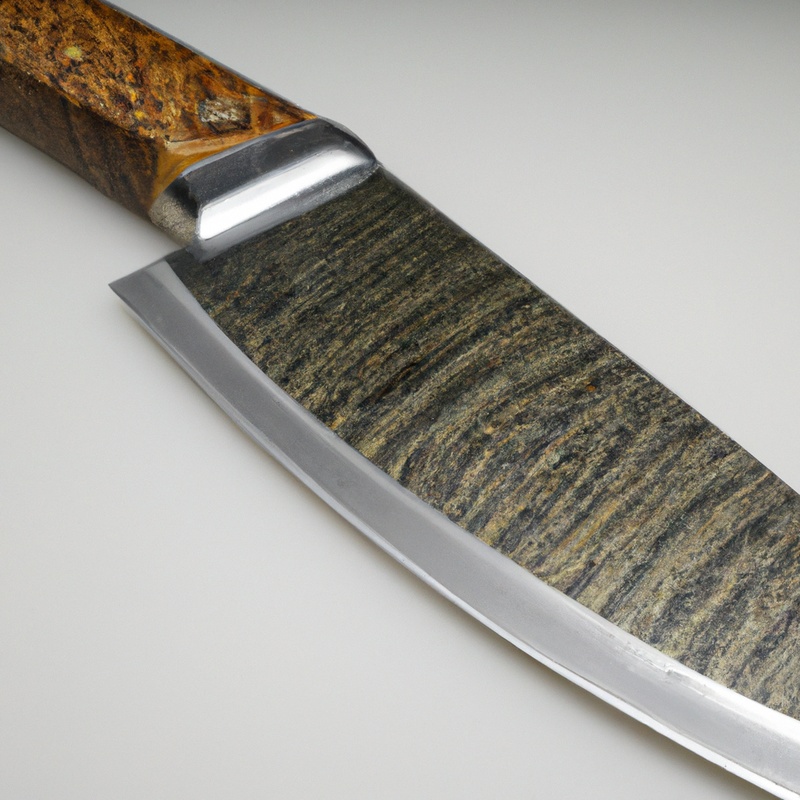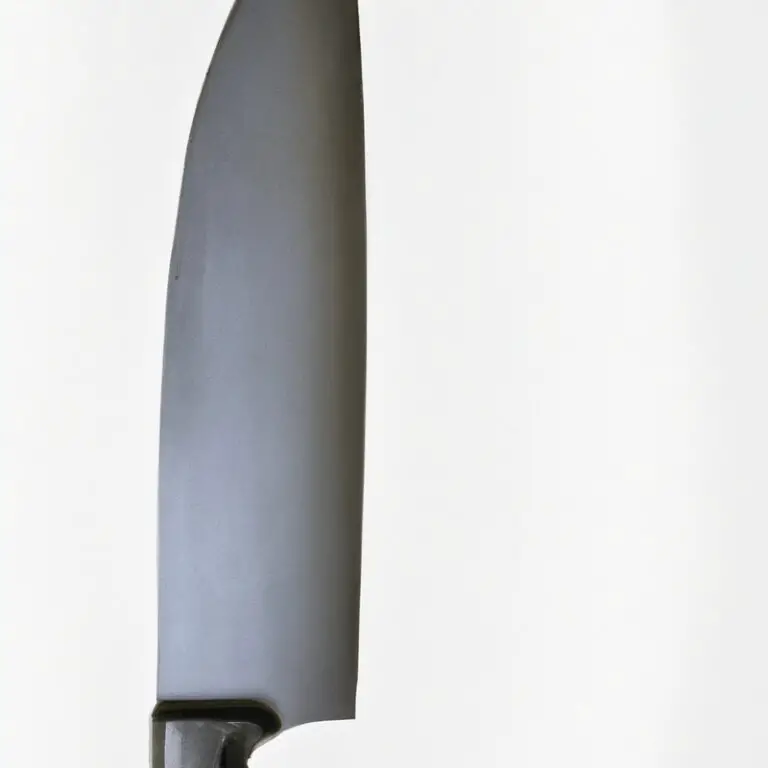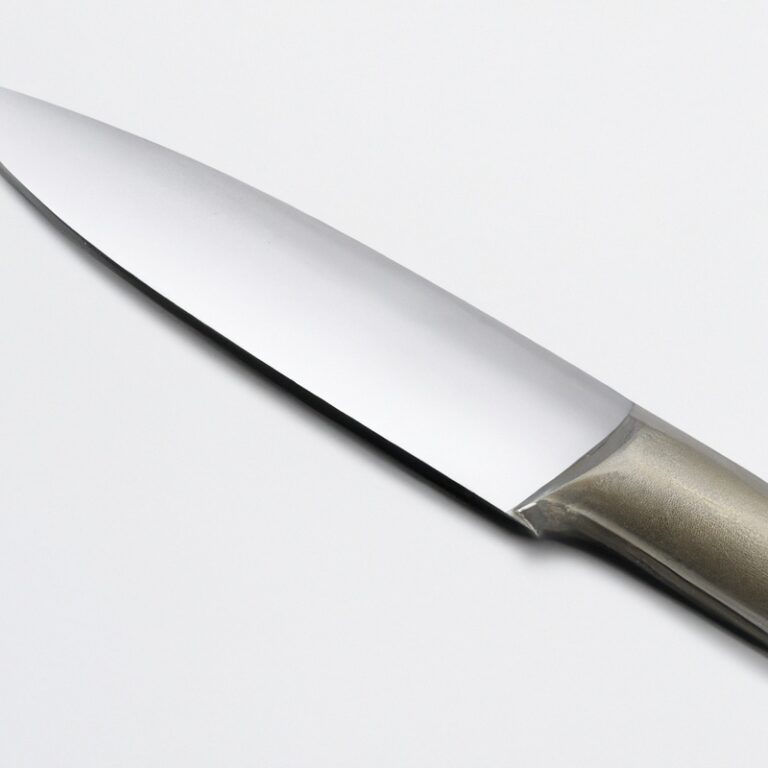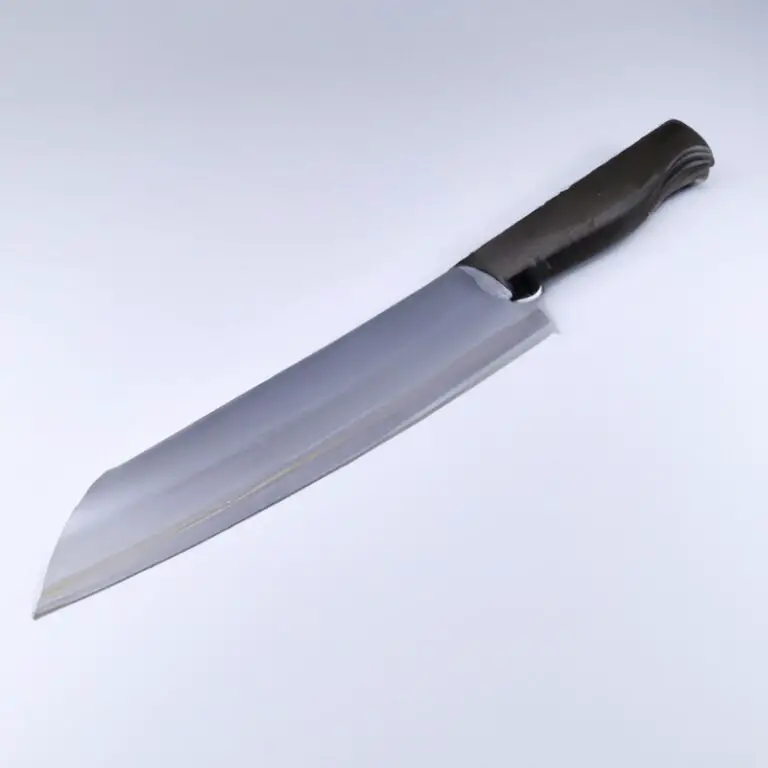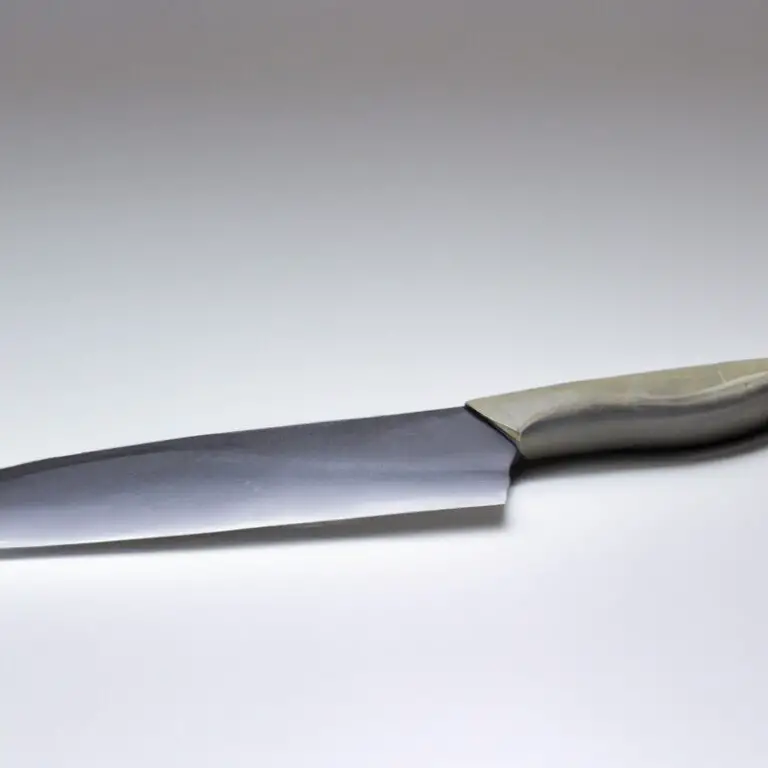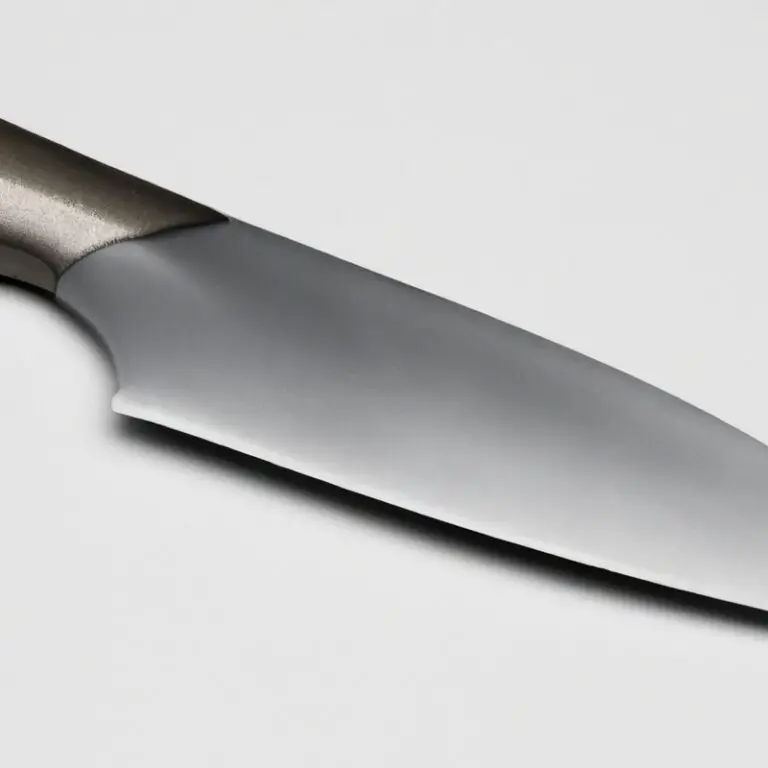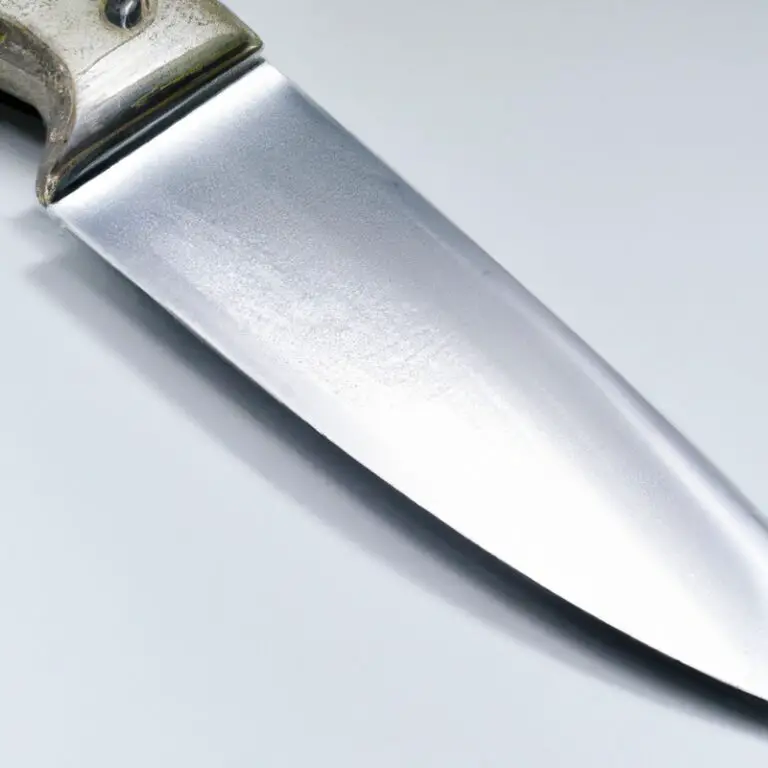What Are The Different Cutting Styles That Can Be Performed With a Gyuto Knife? Slice Like a Pro!
Key Takeaways:
- A Gyuto knife can be used for various cutting styles, including chopping, slicing, and rocking.
- Identifying the right cutting technique for the ingredient and purpose is crucial for optimal performance of the knife.
- The tall blade of the Gyuto knife makes it ideal for using a push-cutting motion, while the long blade enables efficient slicing.
- Proper maintenance and sharpening of the Gyuto knife are essential for achieving precision cuts and extending the knife’s lifespan.
Welcome to the world of Gyuto knives – the versatile knives that can revolutionize your cooking style. As a professional chef, I know the importance of choosing the right knife for the job.
While there are many knives on the market, the Gyuto knife stands out as a favorite among culinary experts.
In this article, we will delve into the different cutting styles that can be performed with a Gyuto knife. From mastering classic Japanese cuts to utilizing the lightweight and versatile design for western-style techniques, you’ll discover how a Gyuto knife can be your go-to kitchen tool.
So, let’s sharpen our skills and explore the possibilities with this amazing knife!
Understanding the Anatomy of a Gyuto Knife: A Guide to Its Blade Shape and Bevels
A Gyuto knife has a unique blade shape with a slim profile and elongated, slightly curved edge that tapers to a sharp point, designed to cut clean and precise. Its blade is made with specific bevels or angles ground on either side to form the cutting edge, each with a different purpose.
The primary bevel is the angle formed between the knife’s spine and the blade’s edge, usually set at a higher degree on one side to create a sharp edge.
This creates a blade with a slight curve, allowing for more effortless cutting motion. The secondary bevel, also known as the micro bevel, is the angle created when the edge is polished further at a lower degree, adding an extra layer of sharpness and durability to the blade.
The Gyuto knife is typically ground into a double bevel, meaning both sides are angled to create the cutting edge.
However, some manufacturers produce single beveled Gyuto knives that are useful for specific cutting tasks such as sushi preparation. Understanding the anatomy of a Gyuto knife and its blade shape and bevels are essential in choosing the right knife for a specific cutting task.
A Gyuto knife with a higher primary bevel is ideal for chopping and slicing tougher ingredients such as meat, while a lower primary bevel is best for delicate tasks such as filleting and skinning fish.
Investing in a high-quality Gyuto knife is essential for any home or professional cook, as it serves as a versatile tool capable of handling a wide range of cutting tasks with precision and efficiency.
The Classic Japanese Cutting Style: Mastering Santoku Cuts with a Gyuto Knife
The Santoku cut is a classic Japanese cutting technique that has gained popularity worldwide due to its versatility and precision. It is a multi-purpose cut that is suitable for slicing, dicing, and chopping fruits, vegetables, and meats.
The Santoku cut is typically performed with a Gyuto knife, a Japanese kitchen knife with a long, thin, and sharp blade that tapers towards the tip.
The blade’s design enables the user to make precise cuts without putting too much pressure on the food. To perform the Santoku cut, hold the Gyuto knife vertically with the blade edge facing downwards and place the food item on the cutting board.
Using a forward and downward motion, slide the blade across the food, creating thin, even slices.
Since the Santoku cut involves a slicing motion, it is important to use a sharp Gyuto knife and maintain a consistent angle throughout the cut. With practice, one can master the art of Santoku cutting and achieve precise cuts with ease.
In summary, mastering the Santoku cut with a Gyuto knife is an essential skill for any chef or home cook.
It enables them to prepare food efficiently and accurately while also showcasing their knife skills.
Western-Style Cuts: Slicing, Dicing, and Chopping Techniques with a Gyuto Knife
The Gyuto knife is a versatile tool that can handle various Western-style cutting techniques such as slicing, dicing, and chopping. For slicing, hold the knife at a slight angle and move it back and forth to create thin, even slices of meat or vegetables.
For dicing, make a series of parallel cuts, then rotate the ingredient and repeat in a perpendicular direction, resulting in small, uniform cubes.
When chopping, use a rocking motion to create coarse or fine cuts, depending on how much pressure is applied. With practice, these Western-style techniques can be mastered with a Gyuto knife, making it a valuable tool in any kitchen.
The Delicate Art of Precision Cutting: Using a Gyuto Knife for Julienne and Brunoise
The Gyuto knife is a versatile tool that enables the delicate art of precision cutting. Julienne and brunoise are two of the most precise cuts that a chef can make, and the Gyuto knife is ideal for achieving them.
To julienne vegetables, start by cutting the vegetables into thin, even slices.
Then, stack the slices and cut them into thin strips. For brunoise, cut the vegetables into small, even cubes.
The key to success is to use a sharp blade and maintain a stable grip on the knife.
With these techniques, a Gyuto knife can help to elevate your culinary skills and impress diners with your finely crafted dishes.
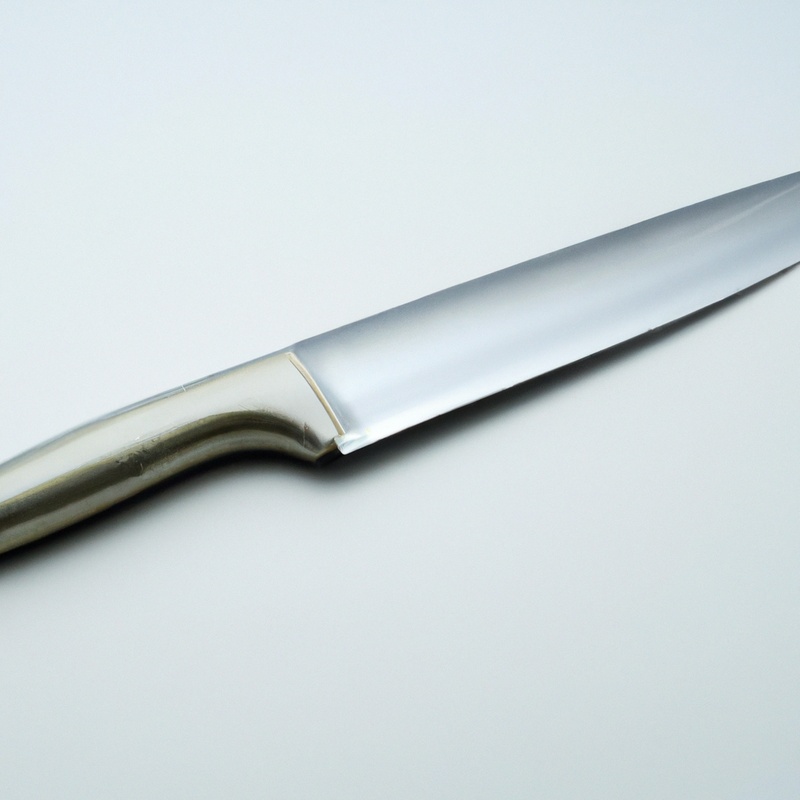
The Perfect Slice: Achieving Uniform Cuts with Gyuto Knife’s Single Bevel Edge
The single bevel edge of a Gyuto knife makes it a perfect tool for achieving uniform cuts. With a single bevel edge, you can slice through food smoothly, reducing the risk of tearing or crushing.
To get the perfect slice, position the knife at a 15-degree angle, ensuring that the blade catches the surface of the food.
Using a single slicing motion, glide the knife through the food, applying minimal pressure. This technique is ideal for carving meats, vegetables, and fish, making it a versatile tool in the kitchen.
Investing in a high-quality Gyuto knife with a single bevel edge can significantly improve your efficiency in the kitchen and make your dishes stand out.
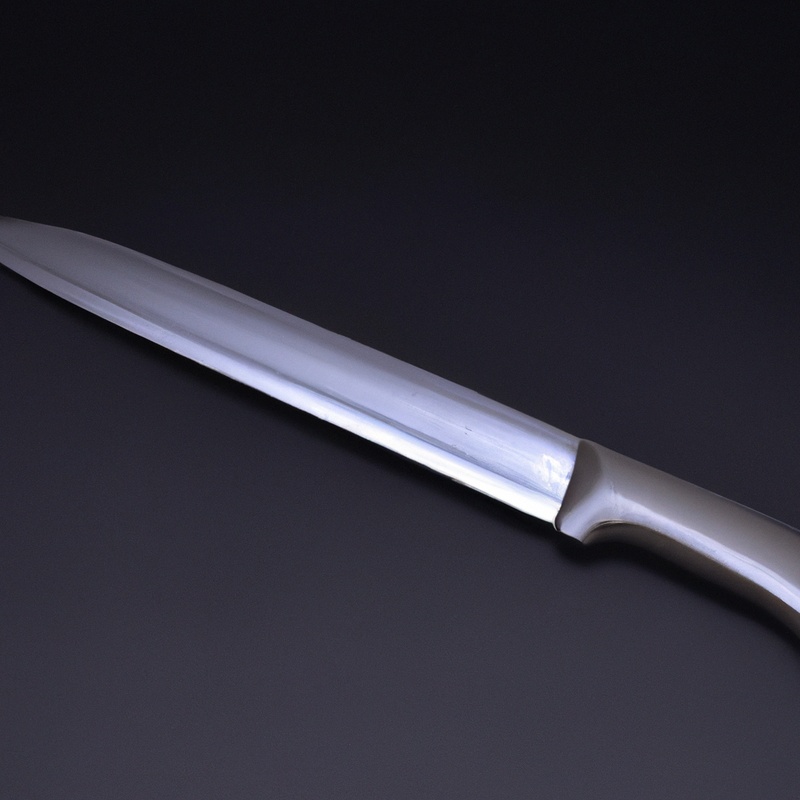
Advanced Techniques: Mastering the Gyuto Knife’s Rocking Cut and Push Cut
Advanced Techniques: Mastering the Gyuto Knife’s Rocking Cut and Push Cut The Gyuto knife’s versatility makes it an essential tool in every chef’s kitchen. Two advanced techniques that require practice to perfect are the Rocking Cut and Push Cut.
The Rocking Cut is a back-and-forth motion used to chop herbs, slice vegetables, or cut meat.
The benefits of this technique include speed and precision, which allow for faster and more consistent cuts. To master the Rocking Cut, hold the handle with a firm grip, begin with the tip of the blade touching the cutting board, and use a seesaw motion to rock the blade back and forth.
The Push Cut technique is ideal for carving meats or slicing thicker vegetables.
To achieve perfect cuts, place the tip of the blade on the food and apply enough pressure to push the blade through the ingredient in one smooth motion. The Push Cut is similar to the slicing motion, except that the knife blade is not moved in a back-and-forth motion.
With practice, mastering the advanced techniques of the Gyuto knife’s Rocking Cut and Push Cut can enhance your culinary skills and make cooking more enjoyable.
The Ideal All-Rounder: How a Gyuto Knife Can Replace Multiple Kitchen Knives
A Gyuto knife is an all-round kitchen tool that can replace multiple knives, making it an ideal investment for any cook. With its versatile design, the knife can be used for slicing, dicing, chopping, and precision cuts like julienne and brunoise.
The single bevel edge of the Gyuto knife ensures uniform cuts and its lightweight nature reduces fatigue and allows for prolonged use.
Additionally, a high-quality Gyuto knife is made from top-notch Japanese steel, providing durability and longevity. Overall, investing in a high-quality Gyuto knife is a cost-effective solution for both professional and amateur cooks who seek a reliable and efficient kitchen tool.
Sushi Chef’s Best Friend: Using a Gyuto Knife for Prepping Fish and Seafood
When it comes to prepping fish and seafood, a Gyuto knife is a sushi chef’s best friend. The long, thin blade of a Gyuto knife makes it easy to make precise cuts and fillets, while its sharpness ensures a clean and smooth cut.
Its versatile design makes it ideal for different types of seafood, from delicate fish to hard-shelled crustaceans.
With a Gyuto knife, chefs can prepare fillets, remove bones, and even create decorative cuts to enhance the presentation of the dish. The knife’s lightweight and ergonomic handle also provide maximum control and minimal fatigue, making it perfect for long hours of food preparation.
In short, if you want to create masterful seafood dishes with precision and ease, add a Gyuto knife to your kitchen arsenal.
The Chef’s Secret Weapon: Leveraging Gyuto Knife’s Lightweight and Versatile Design
The Gyuto knife is the chef’s secret weapon with its lightweight and versatile design. Its thin and sharp blade can be used for various cutting styles, including slicing, chopping, dicing, and mincing.
The pointed tip of the blade assists in delicate tasks such as trimming meat and removing the skin from fish.
The long, slender blade enables a smooth rocking motion for efficient chopping and mincing. The Gyuto knife’s versatility extends beyond vegetables and meats with its ability to cut through soft bread without crushing it.
Its lightweight construction allows for easier handling, reducing fatigue during prolonged use.
Overall, the Gyuto knife’s design makes it an ideal all-rounder for any kitchen task.
Why Invest in a High-Quality Gyuto Knife: Exploring the Benefits of Using a Top-Notch Japanese Knife
Investing in a high-quality Gyuto knife is worth considering if you want to level up your cooking game. Here are some benefits of using a top-notch Japanese knife:
- Durability and Longevity: Gyuto knives are made of hard steel, which makes them sturdy and long-lasting.
- Precision and Sharpness: The blade of a Gyuto knife is ultra-sharp and precise, making it easy to achieve uniform cuts every time.
- Versatility: A Gyuto knife can be used for various cutting techniques, from slicing and dicing to julienning and brunoising.
- Comfort and Control: The ergonomic handle of a Gyuto knife provides a comfortable grip and allows for better control while cutting.
- Aesthetics: A high-quality Gyuto knife is a work of art, with its unique design and intricate patterns on the blade.
Investing in a top-notch Japanese knife like a Gyuto knife ensures that you have a reliable tool in your kitchen that can save you time and effort. With a Gyuto knife, you can enjoy the precision and finesse associated with Japanese knife-making, and take your cooking to the next level.
Final Verdict
The Gyuto knife is a versatile kitchen tool that can help you perform various cutting styles with ease. Whether you’re mastering the classic Japanese cutting style with Santoku cuts or opting for Western-style slicing and dicing techniques, the Gyuto knife has got you covered.
From julienne and brunoise to achieving the perfect slice, this knife’s single bevel edge allows for precision and uniform cuts.
What’s more, the Gyuto knife’s lightweight and versatile design make it a chef’s secret weapon in the kitchen. With a higher price tag than traditional Western knives, investing in a high-quality Gyuto knife may seem daunting.
However, the benefits of using a top-notch Japanese knife make it well worth the investment.
So if you’re looking to elevate your culinary skills and take your cutting game to the next level, a Gyuto knife is definitely worth considering.

